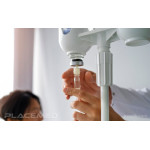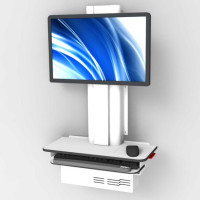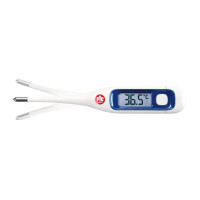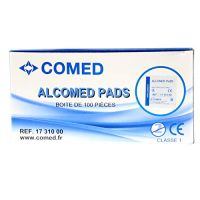Mastering the Art of Infusion: Choosing the Right Medical Infuser!
In this post, we will discuss infusers: an essential tool in the field of medical care. We will take a close look at the various criteria to consider when choosing your infusion equipment, and we will offer some practical recommendations to help you select the infuser that contributes to superior healthcare, while adhering to the strictest safety standards.

In the medical care sector, which is both complex and dynamic, every second counts, and every detail matters as well. And we all agree that medical equipment should not be chosen lightly, including, of course, the infusion pump. Indeed, this device, though discreet and silent, plays a pivotal role in administering medications, nutrients, and essential fluids, thereby ensuring the maintenance of life and the recovery of patients. And in this article, we will attempt to lift the veil on the subtleties of the infusion pump, guiding you towards the essential criteria for a wise choice, to ensure optimal and secure care administration.
1.What is an infusion pump?
An infusion pump is an essential medical device used to administer fluids, such as medications, blood, or nutrients, directly into a patient's circulatory system, usually intravenously. This tool is often used in hospitals, clinics, and other healthcare environments to ensure precise and controlled administration of different solutions.
This infusion device generally consists of a needle or catheter, a flexible tube, and a drip chamber that allows control over the fluid's flow rate. More advanced models may be equipped with electronic pumps for even more precise regulation.
The main functionality of an infusion kit is to ensure that medications or other vital substances efficiently reach the patient's circulatory system. It's a vital instrument for many medical procedures, ranging from rehydration to chemotherapy treatments, and the administration of antibiotics.
2.What are the different types of infusion pumps?
Infusion systems are indispensable medical devices for administering medications and other solutions intravenously. They come in several types. Each type has specific characteristics that make it suitable for certain clinical situations.
Gravity Infusion Pump
These are the most commonly used. They operate by gravity force to lower the fluid from the bag or bottle into the patient's circulatory system. The flow rate can be manually controlled using a wheel located on the tube.
Pump Infusion Pump
This type of instrument uses a mechanical or electronic pump to control the flow of the solution. It is often used when the drug administration needs to be very precise, for example, during the administration of chemotherapy drugs or high-risk antibiotics.
Pressure Infusion Pump
This model uses manual or mechanical pressure to force the liquid into the patient's vein. It is often used in emergency situations where time is critical.
Insulin Infusion Pump
This model is specifically designed for the administration of insulin in the treatment of diabetes. It is generally small in size and can be worn by the patient.
Elastomeric Infusion Pump
As for this type of device, it consists of an elastomeric reservoir that, when filled, contracts to push the fluid through the tube at a specific rate. It is generally used for administering medications at home.
3.Preparation and handling of an infusion pump
Selecting an appropriate infusion model is a crucial step to ensure effective and safe administration of fluids or medications. The choice of model depends on several factors, including the nature of the liquid to be administered, the desired flow rate, the patient's condition, and the insertion site. For example, a pump infusion pump might be chosen for more precise flow control, while a gravity model could be sufficient for general hydration.
Preparing the infusion set and liquids is a task that requires great attention and strict adherence to hygiene protocols. This begins with a careful inspection of the infusion instrument for any signs of damage or contamination. Then, the liquid to be administered must be prepared according to specific instructions, ensuring asepsis throughout the process. Finally, the infusion pump is filled with the liquid, and air bubbles are eliminated before connecting it to the patient.
Handling and monitoring the device are essential skills to ensure a safe and effective infusion. The handling technique involves the correct positioning of the device, precise adjustment of the flow rate, and regular monitoring to avoid complications such as infiltration or phlebitis. Monitoring includes observing signs of patient discomfort, regular checking of the insertion site for any signs of infection, and monitoring the infusion to ensure it functions correctly.
4.Risks and complications associated
The use of infusion pumps, although essential in many healthcare scenarios, carries risks and can lead to complications. These can include infections at the insertion site, reactions to the administered drugs, infiltration of fluid into the surrounding tissues, thrombophlebitis (inflammation of a vein), and air embolisms (air bubbles entering the circulation). A thorough knowledge of these risks is essential to prevent and respond to them effectively.
To minimize the risks associated with the use of this infusion instrument, strict safety standards and usage protocols must be followed. This includes proper sterilization of equipment, following drug preparation procedures, using aseptic techniques during insertion and handling of the infusion pump, and adhering to guidelines for changing dressings and its replacement.
Regular monitoring is a key aspect of safety in the use of infusion equipment. Healthcare professionals must be vigilant for warning signs such as redness, swelling, or pain at the insertion site, sudden fever, a change in the infusion flow rate, or patient distress. Any abnormalities must be immediately reported and addressed to prevent complications.
5.Criteria for selecting an infusion pump?
Choosing the right infusion pump is a critical decision that can have a significant impact on the effectiveness of medical treatments. Several factors must be considered to ensure the most suitable choice:
- Nature of the treatment: specific drugs and solutions to be administered may require specific types of infusion pumps. For example, pump models are often necessary for precise administration of drugs such as antibiotics or chemotherapy.
- Duration of administration: for long-term treatments, more durable and comfortable infusion pumps may be preferable.
- Infusion rate: the rate at which the liquid must be administered can influence the choice of infusion pump. Pump models offer precise control of the flow rate, while gravity models may suffice for more general rates.
- Patient's condition: the health status and physical characteristics of the patient, like the quality of their veins, can also affect the choice of infusion equipment.
- Environment of use: some models are more suited to home use, while others are designed for a hospital environment.
- Compliance with standards: ensure that the infusion pump you choose complies with all relevant safety and quality standards.
 Francais
Francais 
 Quote
Quote  Cart
Cart 



